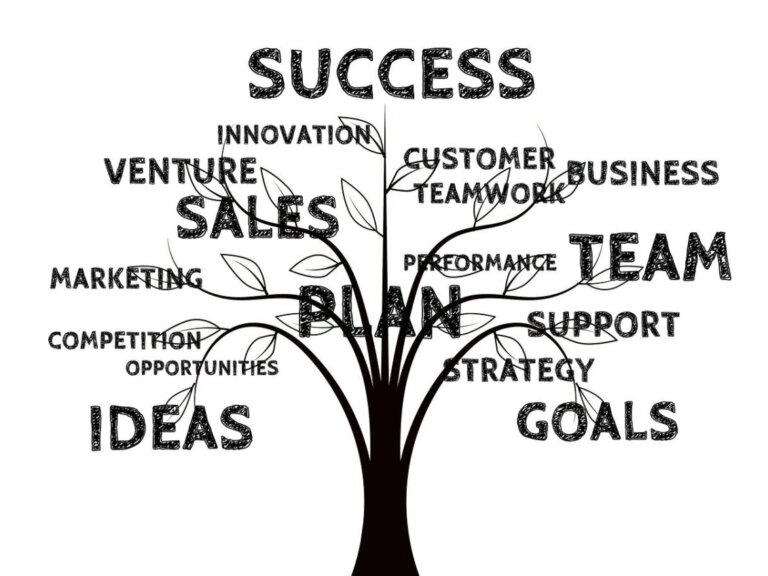
Best Ways to Optimize Product Feeds
For any e-commerce business seeking sustainable growth and a competitive edge, product data is the strategic backbone of digital marketing and sales success. Well-optimized product feeds serve as the engine behind your performance across shopping platforms, including Google Shopping, Facebook Ads, Amazon, Microsoft Advertising, affiliate networks, and emerging comparison shopping engines. In today’s dynamic landscape, feeds are more than data—they are the primary interface by which your products are discovered, ranked, and ultimately purchased.
Why Product Feed Optimization Matters
Across the e-commerce industry, common pain points emerge: suppressed or disapproved products on ad platforms, subpar ad rankings, missed impressions, excessive cost-per-click, wasted advertising spend, and ultimately underwhelming return on ad spend (ROAS). All too often, these symptoms stem directly from poor product data quality or misaligned feed structures. If product titles, descriptions, categories, pricing, and availability are not meticulously maintained and optimized according to channel-specific requirements, your brand is at a distinct disadvantage, regardless of your marketing budget.
This in-depth article is written for decision-makers and high-intent practitioners. You know you must optimize product feeds—but which method will deliver lasting, scalable results? This is your comprehensive BOFU (bottom-of-funnel) comparison guide, focused on practical, high-impact actions and solutions.
Top Contenders to Optimize Product Feeds
When you decide to optimize product feeds, you face three primary approaches, each carrying specific strengths and limitations. Your business’s current scale, technical resources, and growth ambitions should inform this critical, strategic choice.
The main options to optimize product feeds are:
- Specialized Software-as-a-Service (SaaS) Platforms: These are dedicated cloud-based tools designed to simplify, automate, and enhance feed creation, transformation, optimization, and distribution to multiple channels. Examples include DataFeedWatch, Feedonomics, Channable, and GoDataFeed. They provide ready-made mappings, rule engines, and error tracking.
- In-House Management: For organizations with experienced developers, marketers, or data analysts, direct management offers hands-on control. Teams typically use spreadsheet manipulation, scripts (Python, Google Apps Script), database exports, and custom-built systems to manually update and push feeds to different platforms.
- Agency-Led Management (Full-Service): By collaborating with a data-driven digital marketing agency specializing in feed optimization—such as Vollcom Digital—you gain access to expert strategists who manage the end-to-end process, from discovery and data mapping through ongoing refinement and strategic reporting.
Let’s explore real-world examples illustrating when and why each approach may be most effective, before diving deeper into actionable comparisons.
Example Scenarios
- A rising mid-sized fashion brand is aiming to scale its Shopping Ads to five countries. They require multilingual support, robust inventory management, and regular audits for new seasonal launches. Here, a SaaS solution can offer flexibility, but rapid scaling often reveals knowledge or resourcing gaps, making either an expert in-house team or agency involvement valuable.
- A tech-savvy electronics retailer has internal analysts with Python and data engineering skills. They write scripts to sync inventory from their ERP system to Google Merchant Center multiple times per day. This in-house solution enables micro-controls but places the burden of ongoing optimization, error handling, and trend monitoring on internal staff.
- A premium DTC (direct-to-consumer) homeware business wants to secure higher ad impression share, optimize product titles for query matching, and keep pace with competitor tactics across Google and Microsoft channels. Here, a boutique agency offers both deep technical knowledge and a broader strategic perspective—combining advanced automation with real-time channel expertise.
In-Depth Comparison of Feed Optimization Methods
A well-informed decision requires going beyond surface features. Below, we break down how each approach performs on critical aspects such as integration, control, expertise, scalability, resource requirements, and more. Consider this side-by-side guide your shortcut to clarity.
| Criteria | SaaS Platforms | In-House Management | Agency-Led Management |
|---|---|---|---|
| Features/Services | Automated feed creation, multi-channel integration, rule-based optimization tools, and basic error reporting. | Manual data exports, custom script development for transformations, and direct platform uploads. Full control over the process. | Comprehensive Strategy: Advanced, data-driven title and attribute optimization, performance monitoring, A/B testing, custom labeling for campaign segmentation, and continuous strategic consulting. |
| Pricing or Packages | Monthly or annual subscription fees, often tiered based on SKU count, number of channels, or feature access. | No direct software fees, but incurs significant internal resource costs, including salaries and development overhead. | Typically a monthly retainer or project-based fee. Pricing is value-based, directly tied to the service level and ROI generated. |
| Specialization | Provides the technology for general e-commerce use cases. The strategic implementation and optimization expertise must come from the user. | The level of specialization is entirely dependent on the skills and experience of the internal team managing the feeds. | Data-Driven Marketing: Deep, specialized expertise in the complex and evolving requirements of each advertising channel. Focuses on turning data into a competitive advantage. |
| Pros | – Rapid setup and deployment- Lower initial financial outlay- Suitable for basic feed management needs | – Absolute control over data and processes- No recurring subscription costs | – Access to a team of dedicated experts- Proactive optimization and problem-solving- Frees up valuable internal resources- Directly aligned with achieving performance KPIs |
| Cons | – Requires significant in-house expertise to be effective- Lacks strategic guidance and support- Costs can escalate quickly with scale | – High cost in time and human resources- Highly susceptible to human error- Difficult and slow to scale across new channels- Lacks specialized, up-to-date knowledge | – Higher initial investment compared to a basic SaaS tool |

SaaS Platforms: When and Why?
SaaS feed management platforms are engineered for operational efficiency, especially for businesses aiming to reduce manual effort and minimize human error in day-to-day feed updates. Their intuitive dashboards often include export templates tailored to major channels (Google, Meta, Amazon), error detection, field mapping wizards, and rules-based modifications without requiring complex coding.
Key Strengths:
- Speed: Rapid onboarding, especially for small to midsize catalogs.
- Automation: Built-in scheduling, inventory syncs, and channel-specific export logic.
- Accessibility: Marketers and merchandisers can update feeds with minimal IT support.
- Marketplace Integration: Support for dozens of ad channels “out of the box.”
Actionable Tips:
- Leverage built-in rules engines for title and description modifications by keyword insertion, dynamic pricing, or stock status.
- Enable automated error notifications to swiftly resolve data issues that could suppress products.
- Use feed segmentation to adapt attributes for specific channels (e.g.,
custom_label_0for the Google Shopping campaign subdivision.)
Considerations:
- Customization limitations: SaaS tools have fixed templates—complex or non-standard data needs may require workarounds.
- Scalability costs: Pricing grows with catalog size and channel count.
- Advanced optimization strategies—such as attribute-level A/B testing or sophisticated category mapping—may be limited.
Popular SaaS Solutions:
- DataFeedWatch GitHub – Offers wide integration support.
- Google Merchant Center Autofeed Generator GitHub – For automated feed creation pipelines.
- Channable GitHub – Flexible rule builder.
In-House Management: When and Why?
Larger or more technically advanced companies may opt for full in-house control, building custom scripts tailored to the business’s evolving requirements or integrating directly with ERP/PIM systems.
Key Strengths:
- Flexibility: Any update, enrichment, or channel-specific data requirement can be automated or adapted on demand.
- Integration: Connect directly with inventory, pricing, and order management systems for real-time or near-real-time updates.
- Cost Management: In the absence of SaaS subscription fees, costs are absorbed into existing payroll, especially where data teams are established.
Actionable Tips:
- Script feed transformations using open-source feed parsers on GitHub to automate large attribute changes.
- Establish automated validation routines (e.g., via Python or Node.js) to check for missing images, out-of-stock flags, or GTIN inconsistencies before pushing updates.
- Document your channel requirements rigorously and establish a change management workflow to support rapid platform or policy updates.
Considerations:
- Resource risk: Talent retention for skilled feed engineers is challenging, and high turnover can create knowledge silos.
- Testing complexity: Custom scripts introduce error risk if not properly version-controlled or tested.
- Scaling challenges: Expansion to new platforms requires ongoing script and data architecture investments.
Agency-Led Management: When and Why?
By partnering with an external agency, businesses gain immediate access to platform-native expertise, strategic oversight, and operational bandwidth. Agencies, such as Vollcom Digital, go further than simply maintaining the minimum requirements for feed health—they actively seek performance gains.
Key Strengths:
- Expertise: Access to experienced professionals who track industry changes and algorithm updates.
- Strategy: Agencies constantly analyze feed-based performance data, test new product data structures, and recommend experimental changes for lift.
- End-to-End Service: From feed audits to reporting and consulting on future opportunities.
Actionable Tips:
- Request a quarterly feed health audit, with clear recommendations and prioritization.
- Leverage your agency’s attribution modeling to link feed changes directly to campaign improvements and revenue growth.
- Trust agencies to manage cross-channel expansion: As you add platforms like TikTok Shopping or new affiliate partners, agencies can map, optimize, and manage at scale.
Considerations:
- Investment: Most agencies price their engagements based on result-driven retainers; upfront cost is higher, but longer-term performance often outweighs basic subscription savings.
- Transparency: Insist on detailed reporting and clear KPIs connected to contractual milestones.
flowchart TD
A[Start Optimizing Your Product Feeds] --> B{Choose Method}
B -->|SaaS| C[Easy onboarding, automation, rapid updates]
B -->|In-House| D[Full control, requires technical skill, flexible integration]
B -->|Agency| E[Comprehensive strategy, data-driven results]
C --> F[Ideal for smaller teams, quick start]
D --> G[Ideal for technical orgs, complex needs]
E --> H[Ideal for scaling, maximum ROI, multi-channel expansion]What Makes a Product Feed Truly Optimized?
Optimizing product feeds is not a one-time activity—it’s an iterative process tied to your changing inventory and the shifting requirements of advertising platforms. The best practitioners conduct ongoing feed optimization focused on these three pillars:
1. Data Accuracy and Freshness
Frequent updates to stock status, pricing, product options, and ratings ensure your ad campaigns never show out-of-stock or incorrect items. Use platform APIs or scripted schedules to sync updates at least several times per day.
Pro tip: Automated error reporting (using tools or scripts) can flag mismatches—such as titles not matching landing pages. Set up Slack or email alerts to minimize wasted ad spend.
2. Attribution & Campaign Segmentation
The most effective marketers continuously enrich feeds with granular data: custom labels, seasonality tags, bestseller flags, and inventory thresholds. These enable campaign strategists to subdivide and refine ad targeting.
Example: For Google Shopping, assign ‘custom_label_0=Clearance’ to poor-selling stock so it can be advertised differently from hero products. Use A/B testing within the feed to test changes to titles or images for lift.
3. Compliance and Enhancement
Ad platforms regularly update feed specifications, attribute requirements, and policies on prohibited content.
- Keep a changelog of attribute definitions, mandatory fields, and optional enhancements for every active channel.
- Utilize schema.org markup and open-source tools on GitHub to validate and enrich product data.
- Consistently review platform notifications for policy changes and swiftly adapt to emerging requirements.
Advanced Feed Optimization Techniques
Moving beyond basics, best-in-class brands integrate the following into their feed optimization arsenal:
Dynamic Content Customization
Use scripts or tool-based rules to append high-volume search terms, product use cases, or seasonal modifiers to product titles and descriptions.
Example:
- Original: “Men’s Blue Running Shoes”
- Optimized: “Men’s Blue Running Shoes – Lightweight, Size 8-13, Free Shipping”
Automated Image Auditing
Deploy scalable quality checks to ensure all products have at least three high-resolution images, no broken URLs, and compliant backgrounds.
Tip: Pair open-source image audit scripts on GitHub with agency monitoring for continuous compliance.
Feed Enrichment with Merchant Promotions
Enhance your feed with promotion_id or sale_price attributes for Google Merchant Center or similar fields across other platforms. Automate inclusion/exclusion of promotional pricing based on internal calendars or performance triggers.
Real-Time Inventory and Price Matching
Integrate with your PIM, ERP, or e-commerce backend (such as Shopify, Magento, or WooCommerce) to ensure that feed data always matches real availability.
GitHub Resource: Shopify Feed API GitHub — Build connectors for automated synchronization.

Objection Handling & Risk Reduction
Selecting a solution is a strategic decision, often scrutinized at the executive level due to cost, complexity, and uncertainty about results. Below are the most common objections and practical responses to help drive confident decision-making.
1. “The investment for an agency seems high compared to a SaaS subscription.”
On the surface, SaaS platforms appear cost-effective, with clearly advertised monthly fees. However, these costs scale rapidly with product catalog size, channel usage, and the complexity of required optimizations. In addition, you must consider the time and compensation for internal staff needed to oversee, correct, and continually enhance the feed’s performance.
In contrast, a full-service agency offers a bundled approach: they provide access to both enterprise-class technology and advanced expertise—ensuring your product feeds increase share of voice, drive qualified traffic, and boost ROI far beyond basic compliance.
Value-Added Agency Offer:
- Proactive strategy calls.
- Bespoke reporting tied to business outcomes.
- Multichannel go-live and rapid response support.
For more details, review our Performance Intelligence services.
2. “Our internal team has the technical skills to manage this.”
While internal technical teams may excel at process automation or basic error handling, cutting-edge feed optimization demands channel-specific expertise, ongoing research, and the agility to adapt to sudden policy changes or new campaign formats.
Data-driven agencies add value by staying ahead of trends, running diagnostics, and collaborating on long-range e-commerce growth strategies—which frees up your technical resources for higher-leverage projects.
For true transformation, explore data-driven transformation services.
3. “How can we be sure an external partner will understand our business and products?”
The most impactful agency relationships begin with mutual investment in discovery and tailored onboarding. Vollcom Digital, for example, immerses deeply in your catalog, business goals, and competitive landscape before recommending optimizations. This ensures each change serves both compliance and broader business objectives.
We co-create a data strategy that is accountable to performance, not just process.
Your Risk-Free Path to a Decision
Because optimizing product feeds directly affects your digital revenue, we make engagement transparent, consultative, and focused on measurable success.
- Complimentary Consultation: Our experts will provide a diagnostic review of your current feeds—identifying hidden errors, latent opportunities, and a prioritized path to improvement.
- Customized Proposal: Receive a tailored plan detailing channel enhancements, quick wins, and medium-term feed architecture optimizations designed to maximize your campaign results.
- Transparent Reporting: You’ll receive clear, actionable insights mapping our efforts directly to changes in traffic, conversion, and return on ad spend.
Actionable Next Steps: Optimize Product Feeds for Sustainable Growth
The path you take—SaaS, in-house, or with a specialized agency—will shape your e-commerce growth trajectory for years to come. Feed optimization is an ongoing discipline that rewards precision, adaptability, and strategic expertise.
If you are ready to gain the competitive advantage of seamless multi-channel product feed optimization, Vollcom Digital is your partner for data-driven marketing and measurable ROI.
Contact us now to request a free consultation and receive your custom proposal for optimizing product feeds. Unlock growth, ensure compliance, and maximize the efficiency of your marketing investments.



Share